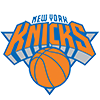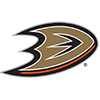Fantasy golf leagues with daily roster changes present some challenges for fantasy owners. One of the challenges involves the deep under-par-round and its next round. Should you stick with the hot hand or sub him out?
What happens the day after a golfer posts a 5-, 6- or 7- (or more) under par score for the low of the round? Next-round possibilities are the player goes even lower, repeats the low score or shoots a higher score. But which is more likely? Does a golfer who gets hot one day carry it to the next day? Or was his deep low-round day more likely a fluke not to be repeated the following day?
We analyzed the results of 372 players, their 1,122 low rounds in every PGA Tour stroke-scored event in 2010 and 2011 for the low rounds of the day, as well as their scores in the next day's round. We compared round one with round two, two with three and three with four. We measured, and charted, the stroke difference between the low round and the next round. The differential ranged from 4-under to 17-over. For example, according to the chart below, 51 golfers had a stroke difference of plus-6 from their low round to their next day's round.
| Number of Players | 1 | 2 | 7 | 7 | 14 | 31 | 28 | 44 | 42 | 51 | 45 | 33 | 22 | 11 | 14 | 11 | 4 | 1 | 2 | 1 | 1 |
| Score Differential | -4 | -2 | -1 | 0 | +1 | +2 | +3 | +4 | +5 | +6 | +7 | +8 | +9 |
Fantasy golf leagues with daily roster changes present some challenges for fantasy owners. One of the challenges involves the deep under-par-round and its next round. Should you stick with the hot hand or sub him out?
What happens the day after a golfer posts a 5-, 6- or 7- (or more) under par score for the low of the round? Next-round possibilities are the player goes even lower, repeats the low score or shoots a higher score. But which is more likely? Does a golfer who gets hot one day carry it to the next day? Or was his deep low-round day more likely a fluke not to be repeated the following day?
We analyzed the results of 372 players, their 1,122 low rounds in every PGA Tour stroke-scored event in 2010 and 2011 for the low rounds of the day, as well as their scores in the next day's round. We compared round one with round two, two with three and three with four. We measured, and charted, the stroke difference between the low round and the next round. The differential ranged from 4-under to 17-over. For example, according to the chart below, 51 golfers had a stroke difference of plus-6 from their low round to their next day's round.
| Number of Players | 1 | 2 | 7 | 7 | 14 | 31 | 28 | 44 | 42 | 51 | 45 | 33 | 22 | 11 | 14 | 11 | 4 | 1 | 2 | 1 | 1 |
| Score Differential | -4 | -2 | -1 | 0 | +1 | +2 | +3 | +4 | +5 | +6 | +7 | +8 | +9 | +10 | +11 | +12 | +13 | +14 | +15 | +16 | +17 |
• 215 players, 57.79 percent, are in the plus-4 to plus-8 range.
• 265 players, 71.23 percent, are in the plus-3 to plus-9 range.
• 11 of 372 players, 2.95 percent, followed their low day at even or below. That's poor odds.
• Data from the eight majors show one player at even and 14 at plus-6 or more.
Clearly, a golfer shooting 5-, 6- or 7- (or more) under par calls for a roster change for the next day.
Some interesting notes:
In 2010, one player was at both ends of the spectrum - 4-under and 17-over. Rory McIlroy, at the Quail Hollow Championship, shot the low third-round 64 then shot a fourth-round-low 62 (four-shot lower difference) for his first PGA Tour win. At the British Open, McIlroy shot the low first-round 63 and followed that with a 17-stroke-difference 80. He still played well enough in rounds three and four, though, to finish third.
Rookie Ben Martin, at the 2010 Northern Open, was one of seven players with a low first-round score of 67, but he soared to 80 in round two to miss the cut. At the 2010 Travelers, Jim Renner missed the cut when he followed his low first-round 63 with a round-two 74. Garrett Willis, at the 2010 Transitions, missed the cut with a 65-77.
At the 2011 St. Jude Classic, Harrison Frazar, in his first PGA Tour win, had a low second-round score of 65 followed by round three's low round of 64. At the Colonial, Justin Rose went 64-62 in rounds one and two. At the 2010 Pebble Beach, Paul Goydos second-round 65 was followed with a 64.
























